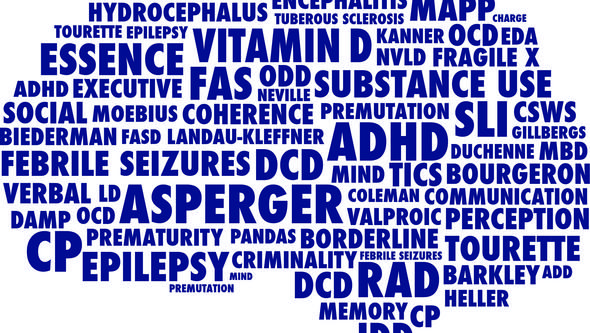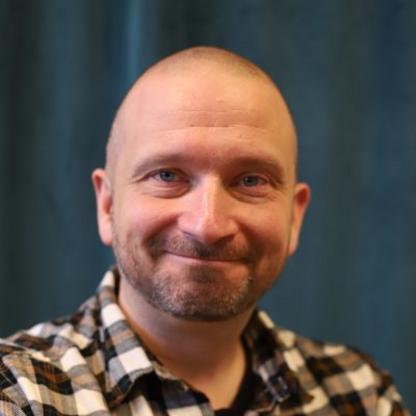
“See the bigger picture”
Johan Nyrenius's latest blog!
[Posted on 23 November, 2021, by Johan Nyrenius]
Hopefully, psychiatry is slowly moving away from an artificial distinction between so-called “NDDs” on one hand and “psychiatric disorders” on the other hand. Perhaps this movement is clearer in Scandinavia than in other parts of the world. The belief that problems are either “NDD-related” or “psychiatric” creates unnecessary conflict, these are conflicts between and within psychiatric units and, unfortunately, conflicts between psychiatric units and the patients we are supposed to treat. We all must understand that developmental and psychiatric disorders co-exist in complicated relationships in the majority of psychiatric patients – if we don’t understand this, we won’t be able to understand our patients. It’s not one or the other. It’s both.

In order for us in psychiatry to understand our patients, we need to see them from multiple perspectives simultaneously. We need to see, assess, and understand their abilities in perceiving their surroundings and process sensory input. We also need to see, assess and evaluate their life experiences and piece everything together to understand what causes the symptoms they need treatment for. We will never be able to understand our patients if we limit ourselves to one perspective – and if we can’t understand the patients and their problems, we will never be able to fully help.

Some might say that “NDDs” are just the next “thing” in psychiatry, like borderline personality disorder or bipolar II – diagnoses were a number of years ago. And some might say that we, who argue about the importance of NDDs, will not be satisfied until all depressions are called autism and all borderline personalities are called ADHD. But the NDDs are not some complete psychiatric model of explanation. They are, indeed, a crucial part of the explanation, but “only” the basic prerequisites can never completely explain a patients psychiatric suffering. We all live in a context that shapes us.
We often hear arguments such as “neuropsychiatry” wants to “biologise” and “medicalise” psychiatry; everything should be treated pharmacologically, and the patients should be “branded” and categorised. Advocates of such arguments tend to forget that psychiatry has been medical for 200 years. They also tend to forget that for example in psychosis care, which since the 1950s has rested heavily on pharmacological treatment, those who exclusively advocate anti-psychotic medication today are few. On the contrary, rapport with caregivers and psychological and social treatment methods are definitely seen as crucial components of treatment and nobody in their right mind would propose a completely pharmacological treatment for psychosis patients. And about the “branding” discussion, I’ve frankly never understood how it can be seen as positive, or ethically correct, to overlook from the patient’s difficulties and set demands that are impossible for the patient to cope with.
Psychological and social treatment interventions in psychiatry must be adapted to the patient’s ability to take them in – otherwise we will undoubtedly fail in our treatments. Trying to treat depression and panic disorder in a patient with underlying ADHD gets significantly more difficult if the patient’s underlying ADHD is not treated. The suffering will be prolonged, and the risk of relapse will be great.
Treating interpersonal difficulties (“personality disorder”) in a patient with underlying autism, without taking the autism into account, will be almost impossible. The patients will not feel seen and understood. The failures in treatment often lead to reduced hope and reduced willingness to seek psychiatric help. “They didn’t understand me the other times I made contact, why would they understand me now?”.

Psychiatry is, and has always been, in a state of crisis. Perspectives and theories have changed and new explanations (models) that have claimed to explain everything have come and gone. I’ve personally never believed in comprehensive explanatory models. My perspective is the complete opposite, and I want you to join me. I want us to complicate things completely and use as many perspectives as possible to understand our patients. I want us to try and see the bigger picture.. I want us to think, for example, from an ESSENCE, psychodynamic, learning theoretic and system theoretic perspective at the same time. It’s actually possible, believe me. How do we best understand and help the patient? What should we start working on so as to decrease the patients’ suffering, get them better and prevent relapses?

So – please – stop thinking either “neurodevelopmental” or “psychiatry”. Start thinking both. Stop thinking “it’s not ADHD, it’s borderline personality disorder”. Start thinking “ADHD with autistic traits and borderline personality disorder, and it’s the personality disorder that creates most problems for the patient at this point in time, but it’s not certain if we will succeed in helping the patient change behaviour without controlling the ADHD first”. Talk to each other in your teams. Talk it through with your patients and help them understand. And patients, demand that your doctors, psychologists, nurses and other staff explain the course of action in a way you understand.
[This is a blog. The purpose of the blog is to provide information and raise awareness concerning important issues. All views and opinions expressed are those of the writer and not necessarily shared by the GNC.]


